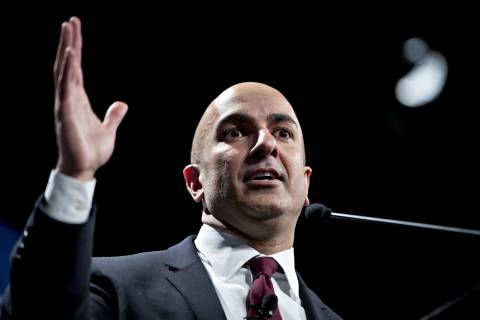
Fed Leaders, Unswayed by Softer CPI, See Rate Hikes Into 2023
(Bloomberg) -- Federal Reserve officials responded to softening inflation data by saying it doesn’t change the US central bank’s path toward even higher interest rates this year and next.
Minneapolis Fed President Neel Kashkari, who prior to the pandemic was the central bank’s most dovish policy maker, said Wednesday that he wants the Fed’s benchmark interest rate at 3.9% by the end of this year and at 4.4% by the end of 2023.
“I haven’t seen anything that changes that,” Kashkari said, responding to a question about a Labor Department report published earlier that showed consumer prices rose 8.5% from a year ago in July. The print was slightly less than the 9.1% increase in the prior month that marked the highest inflation rate in four decades.
His Chicago counterpart, Charles Evans, welcomed the news at a separate event Wednesday, but added that inflation remains “unacceptably high.” He said he expects “that we will be increasing rates the rest of this year and into next year to make sure inflation gets back to our 2% objective.”
Kashkari will be a voter on the central bank’s rate-setting Federal Open Market Committee next year, while Evans is set to retire early next year.
The inflation figures, which came in below forecasters’ estimates, prompted investors to scale back bets that Fed officials would opt for another rate increase of three quarters of a percentage point when they next meet Sept. 20-21, matching the moves at each of the last two meetings in June and July.
San Francisco Federal Reserve President Mary Daly, in her remarks after the CPI print, said that it was far too early to “declare victory” in the central bank’s inflation fight, according to a Financial Times report. She didn’t rule out a third consecutive 75 basis-point increase in September and pushed back on investor expectations of a turn to rate cuts in 2023, while signaling support for a slowing in the pace of rate hikes.
Kashkari, alluding to market pricing of the Fed’s policy path, said it was not realistic to conclude that the Fed will start cutting rates early next year, when inflation is very likely still going to be well in excess of the 2% goal.
“I think a much more likely scenario is we will raise rates to some point and then we will sit there until we get convinced that inflation is well on its way back down to 2% before I would think about easing back on interest rates,” he said.
Evans said he expects the target range for the central bank’s benchmark rate -- now 2.25% to 2.5% -- to rise to 3.25% to 3.5% by the end of the year, and to 3.75% to 4% by the end of 2023.
(Adds Fed official comment in the seventh paragraph.)
More stories like this are available on bloomberg.com
©2022 Bloomberg L.P.
Author: Matthew Boesler